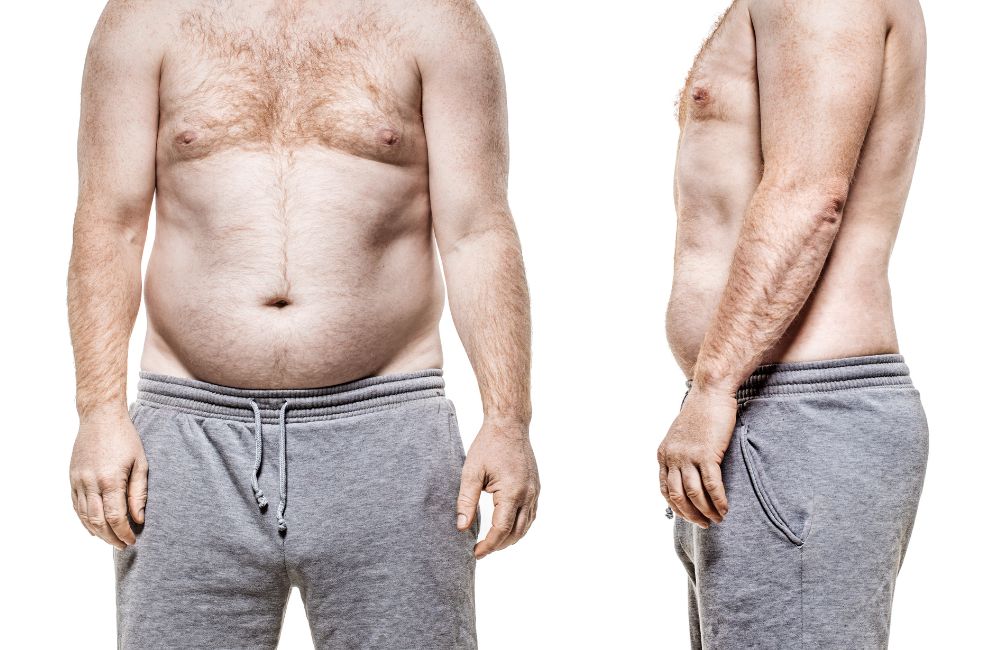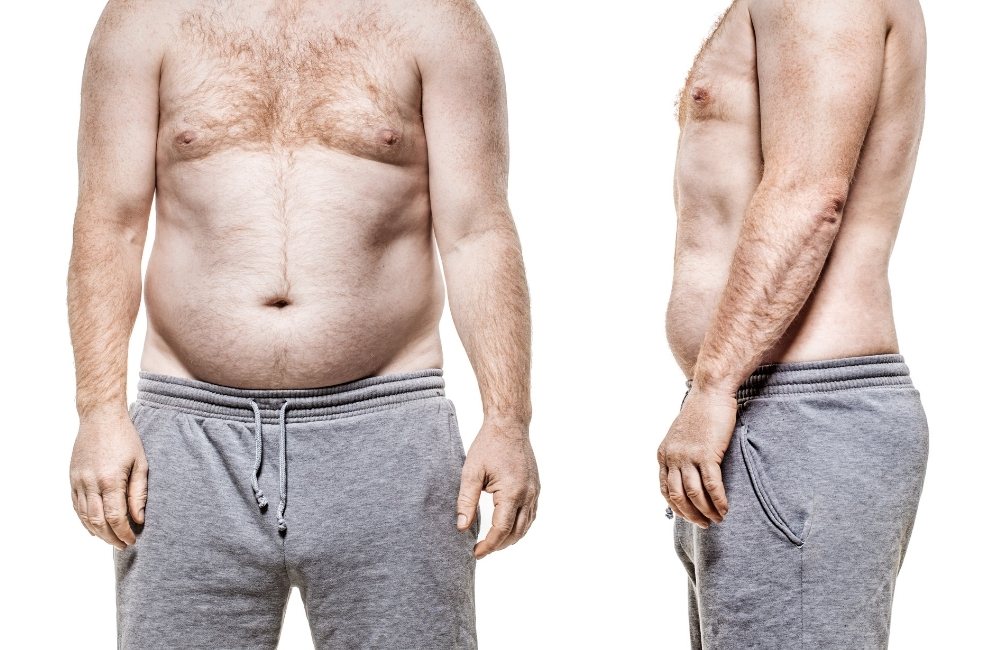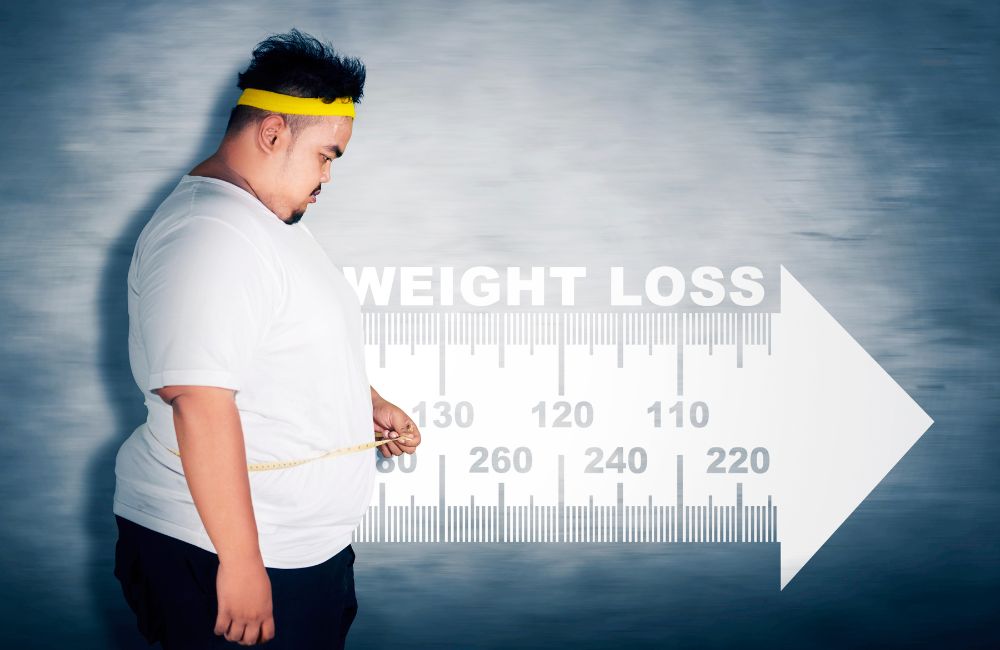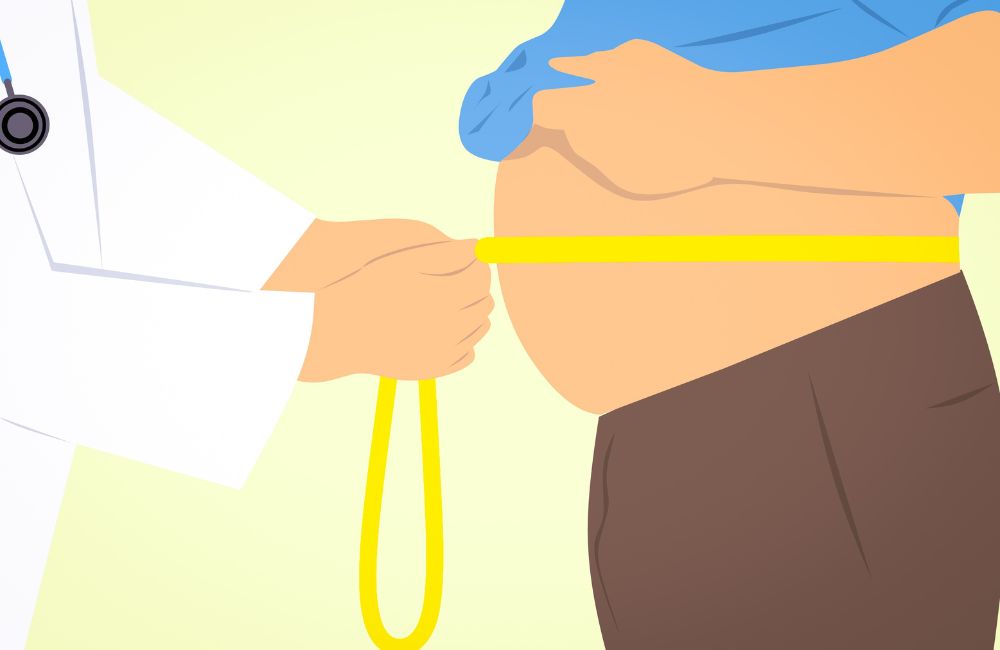
Losing weight after 40 is no easy task. Unless you’ve led an active life thus far, many of us are at odds against metabolism in our 40s.
It’s common to see the scale creeping up once we hit middle age.
Eating healthy and exercising worked well when we were in our 20s. But in our 40s we need to do a little bit more to maintain a healthy weight.
Why does it feel so hard now?
Don’t fret, you’re not alone.
There are many factors that play a role in tipping the scales. Slow metabolism, hormonal changes, stress, and not enough time to hit the gym.
But having a plan and knowing what to do can make losing weight a lot easier.
In this article, we’ll take a look at 5 simple ways to lose weight after 40.
Why Do You Experience Weight Gain after 40

You’ll also like:
Want To Lose Weight Faster? Science Says Do These 3 Simple Things Daily
How To Lose Weight Fast As Possible: 8 Science-Backed Tips
As we get older, our metabolism starts to get a little sluggish.
However, a slower metabolism isn’t entirely to blame for those numbers on the scale.
Many things can cause excess weight after 40 but the most common are lower activity, a decrease in hormones, and genetics.
These factors can cause us to have a slower metabolic rate.
This is the rate you burn calories.
If you have a low metabolic rate, you will not burn a lot of calories at rest.
This makes it easier to gain weight by accidentally eating more than you are burning.
A Decrease in Activity
As we age, a decrease in our activity levels is usually expected.
Whether you are more sedentary at work, have developed achy joints or simply don’t have time to hit the gym, this decrease in activity can result in weight gain.
When we stop moving we start to lose valuable muscle mass.
The less muscle mass we have the lower our metabolic rate.
The lower our metabolic rate the fewer calories we burn at rest, making it easier for fat to take its place.
Adding in light activity and strength training exercises can go a long way when trying to lose or maintain this weight.
A Decrease in Hormones
Hormonal changes can also be a likely cause of increased body fat, especially around our belly.
As we age, women produce less estrogen and men produce less testosterone.
Both of these hormones help to regulate our metabolism.
Testosterone helps with muscle growth in both men and women and estrogen helps to regulate body weight.
With decreased levels, we are more likely to have an increase in body fat.
It is most common for women undergoing menopause to experience an increase in weight or have more difficulty losing weight.
Sometimes referred to as “hormonal belly,” this extra weight is often held in our mid-section.
Weight gain from hormonal changes is not inevitable.
Although it makes maintaining our current weight more challenging, lifestyle factors also play a big role.
Genetics
Another likely cause for weight gain after 40 is genetics.
Studies have shown genetics and lifestyle can determine someone’s chances of packing on extra pounds during middle age.
Gaining weight still does not have to be inevitable, even if your genetic odds are against you.
A healthy diet and lifestyle can greatly decrease your chances of becoming overweight.
Plus, it will increase your quality of life.
Let’s take a look at some tricks to help with weight loss during middle age.
5 Tricks to Lose Weight after 40
1. Emphasize Diet
Traditional weight loss recommendations have not changed.
With weight loss at any age, a healthy diet is essential and should be your first priority.
In order to meet your weight loss goals and get down to a healthy weight, you must be in a calorie deficit.
This means cutting down on your food intake by choosing smaller portions. To put it simply, you want to burn more calories than you consume.
However, it may not always be appealing to cut portion sizes. Fewer calories often mean you will be hungrier.
To avoid battling with your appetite, focus on filling foods during your meals. 100 calories of carbs are less filling than 100 calories of high protein or healthy fat foods.
Add more of these foods to your plate to feel more satisfied after your meals and snacks.
Try to build a balanced plate.
Need help?
Take a look at the USDA MyPlate guidelines for building a balanced meal.
These includes:
Protein:
Fill a quarter of your plate with a lean protein source. This includes chicken, turkey, fish, tofu, or lean cuts of beef and pork.
Increasing your protein intake can help you feel full sooner. This will allow you to choose smaller portions without sacrificing your appetite.
Protein-rich foods will also keep you full for longer. This can help you cut down on unnecessary snacking in between meals.
Fruits and Veggies:
Bump up your fruits and veggies to half your plate. Choose produce items you enjoy.
Avoid adding in foods simply because they are considered “healthy.” It’s easier to stick to a healthy eating routine if you aren’t completely miserable.
Fruits and vegetables are high in fiber and low in calories. This makes them the perfect addition to any meal or snack to keep you full.
Grains:
Choose the last quarter of your plate for whole grains. This can include brown rice, quinoa, whole-grain bread, or whole-grain pastas.
Similar to vegetables, these grains include a healthy boost of fiber to keep you full for longer.
Fats:
Lastly, add some healthy fats. Toss some avocado in your salad or drizzle olive oil on your veggies before you roast them.
If choosing a snack, grab some mixed nuts or dip your apples in peanut butter. Make your snacking routine fun and delicious while you crush those cravings!
Limit Processed Foods
Try to limit or avoid having too many processed carbs during your meals and snacks. These types of foods are designed to be easy to over-eat and are lacking nutritional value.
Instead, swap out chips or crackers for fresh fruit, nuts, or Greek yogurt for a heartier snack. Consider keeping a food diary to keep track of what you are choosing and how often.
Writing down your foods can help you better practice moderation. It can also help to hold you accountable for your food choices.
You can keep a physical food diary in a notebook or download an app on your phone.
Still, struggling?
Consider setting up an appointment with a Registered Dietitian or Nutritionist to help you make personalized adjustments to your diet.
2. Get Moving
As we age, it’s important we keep moving. Movement may look different from when we were in our 20s.
That’s okay!
Making sure you continue to move your body can help you live longer.
It can also make you happier!
Consider adding a brisk walk and some resistance training to your weekly routine. This will help to keep you strong, toned, and healthy. Keeping a regular exercise regimen will help improve your metabolic rate.
It will also help to decrease your risk for chronic conditions such as heart disease and Diabetes.
Not so sure about lifting weights?
Consider working with a personal trainer until you feel comfortable adding in some strength exercises on your own. A personal trainer can help you develop proper form during your workout which will prevent injury.
Again, whatever you choose for your workout routine you want to enjoy. Hate running but love dancing?
Consider getting in 30 minutes of dancing a few times a week for your workout. This will make it far more likely you will keep consistent with your workouts.
You don’t want to dread it and then forget it.
3. Be Consistent
Being consistent is one of the most difficult yet important tips for weight loss of any kind.
To see change, you must give it time. Exercising at random or choosing a healthy meal only every once in a while will not lead to change.
Getting into a routine with your diet and exercise will eventually lead to habit-forming. The easiest way to form a new habit is to start with one small change.
Work on being consistent until you feel this change is now a comfortable part of your routine. Only then should you move on to another change.
Continuing to make gradual changes will lead to long-lasting results.
4. Cut Out Stress
There are many reasons you might be experiencing stress in your 40s. Unfortunately, high levels of stress can cause an increase in cortisol production.
Cortisol is our primary stress hormone. With high levels of cortisol, our body will experience more hunger.
If you are struggling with stress, consider adding in some stress-relieving techniques to help you cope. Yoga, meditation, and breathing exercises can all help with better managing day-to-day stressors.
5. Get Adequate Sleep
Lastly, don’t forget to make sleep a priority. Without adequate sleep, our body is not able to function properly.
This can make working towards our health goals feel impossible. Not getting enough sleep can also result in over-eating.
Aim to get at least 7-8 hours of rest each night. If you struggle with falling asleep, consider making some changes to your sleep environment.
Make sure to avoid all blue light when trying to go to bed. This means cutting out the television, phones, iPads, and computers at least 1-hour before bedtime.
Try soothing sounds from a sound machine or an app on your phone to get you feeling relaxed.
Final Takeaway
Weight loss after 40 is a challenge, but you don’t have to live that way. Many different factors play a role in unfavorable weight gain during middle age.
Diet, exercise, and other lifestyle factors are important to consider in order to have successful weight loss. Develop a routine that emphasizes each of these important aspects.
Not only will you notice a decrease in weight, but you will also be happier and healthier.


